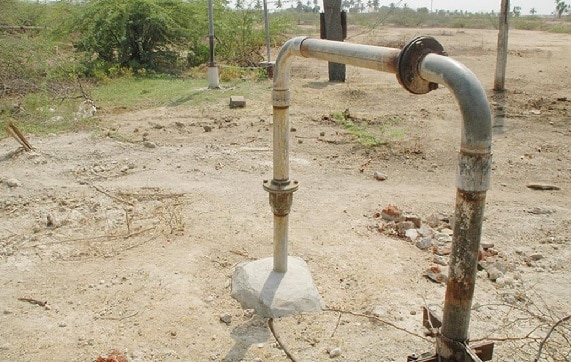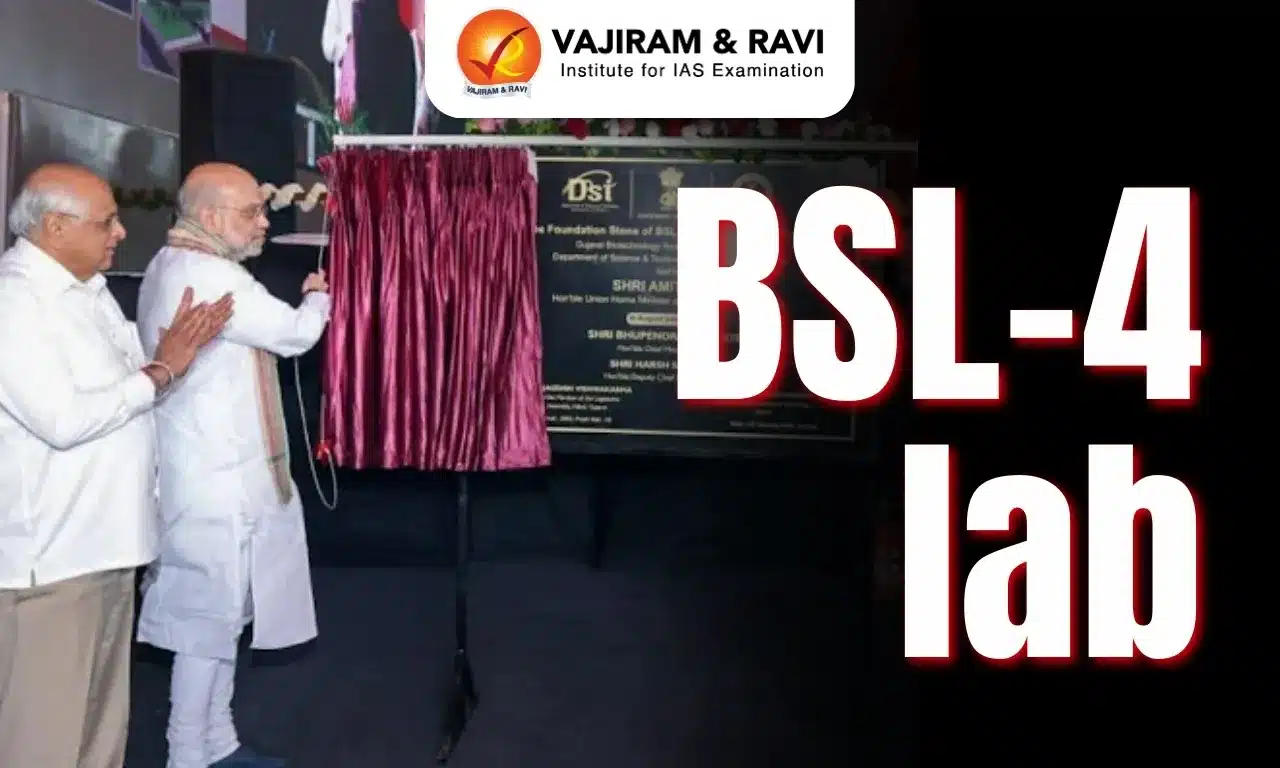What’s in today’s article?
- Why in news?
- Availability of Groundwater in India
- Groundwater extraction in India
- Groundwater contamination in India
- Groundwater Crisis in India:
- News Summary: Jal Shakti Ministry plans network of groundwater sensors
- Key highlights
- Benefits of network of groundwater sensors
Why in news?
- The Jal Shakti Ministry is working on an ambitious plan to deploy a vast network of groundwater sensors.
- These sensors will continuously relay information on groundwater levels as well as the degree of contamination down to the taluk level.
Availability of Groundwater in India
- Groundwater (GW) is the water that seeps through rocks and soil and is stored below the ground. The rocks in which GW is stored are called aquifers.
- The underground (hydrogeological) setting in India can be divided into –
- Hard-rock aquifers of peninsular India: These represent around 65% of India’s overall aquifer surface area, mostly found in central peninsular India.
- Alluvial aquifers of the Indo-Gangetic plains: Found in the Gangetic and Indus plains in Northern India, these have significant storage spaces.
- Availability in India
- Out of the 1,123 BCM (Billion Cubic Meter) /year usable water resources of the country, the share of GW is 433 BCM/year and setting aside 35 BCM for natural discharge, the net annual GW availability for the entire country is 398 BCM.
Groundwater extraction in India
- In the latest Ground Water Resource Assessment-2022, the total annual groundwater recharge in the country has been assessed as 437.60 billion cubic metres (BCM).
- The annual extractable groundwater resource has been assessed as 398.08 bcm, with actual extraction of 239.16 bcm.
- The average stage of groundwater extraction for the country as a whole works out to be about 60.08%.
- Anything above 70% is considered critical.
- There are regions in Punjab, Haryana, Delhi and Rajasthan with groundwater blocks with over 100% extraction.
Groundwater contamination in India
- As per the Central Ground Water Board (CGWB), Groundwater contamination is mostly “geogenic” (natural) and has not significantly changed over the years.
- However, nitrate contamination – a result of the use of nitrogenous fertilisers—has been observed.
- Sections of nearly 409 districts have been confirmed with fluoride contamination and parts of 209 districts have noted arsenic contamination.
Groundwater Crisis in India:
- Given the interdependence of water, the environment and socioeconomic well-being, the challenges in Groundwater resource management are complex and multifaceted.
- These include – Unregulated extraction; Excessive irrigation; Poor knowledge of Groundwater management system; GW pollution; Climate change.
- As per the 2021 CAG report, Groundwater extraction in India increased from 58% to 63%, between 2004-17, exceeding the Groundwater recharge rate.
- Over extraction at the current rate can threaten nearly 80% of drinking water over next two decades.
News Summary: Jal Shakti Ministry plans network of groundwater sensors
- The Jal Shakti Ministry is planning to deploy a vast network of groundwater sensors that will continuously relay information related to groundwater levels and degree of contamination.
- Currently, such information is only measured a handful of times a year and communicated via reports of the Central Groundwater Board.
Key highlights
- Digital water level recorders
- The Central Groundwater Board currently relies on a network of about 26 thousand groundwater observation wells that require technicians to manually measure the state of groundwater in a region.
- Under the new initiative, around 16,000-17,000 digital water level recorders will be connected to piezometers in the wells.
- Piezometers measure groundwater levels, the recorders will transmit the information digitally.
- National Aquifer Mapping Program (NAQUIM)
- Implemented by the Central Ground Water Board (CGWB), NAQUIM was launched in 2012 to map and assess the country’s groundwater resources.
- It aims to create a comprehensive database of aquifers in India and provide information on their location, extent, and characteristics.
- So far, an area of 25.15 lakh square km has been covered under the NAQUIM studies.
Benefits of network of groundwater sensors
- Efforts to make groundwater visible
- The proposed network will continuously measure groundwater level and quality.
- It will feed these data into a centralised network such as that of the National Water Informatics Centre (NWIC).
- Such monitoring would make groundwater visible much the same way as air quality, air pressure, moisture, precipitation etc.
- Helpful for farming activities
- Groundwater forecasts to farmers would be useful for sowing and will help in faming activities.
- Monitoring of groundwater contamination
- Those regions and States that are known to have groundwater contamination, for instance, coastal salinity or excessive depletion, will be monitored more intensely for action by States.
Q1) What is National Water Informatics Centre (NWIC)?
The National Water Informatics Centre (NWIC) is a central agency under the Ministry of Jal Shakti, Government of India, established in 2018 to facilitate the effective management of water resources in the country. Its primary objective is to provide a centralized platform for collecting, collating, and analyzing water resources data and information from various sources and stakeholders.
Q2) What is Central Ground Water Board (CGWB)?
The Central Ground Water Board (CGWB) is a government agency in India that is responsible for the scientific and technical management of the country’s groundwater resources. It was established in 1970 as a subordinate office of the Ministry of Jal Shakti, Government of India. The CGWB’s primary objective is to assess, develop, and manage the country’s groundwater resources in a sustainable manner. It conducts hydrogeological studies, monitors groundwater levels and quality, promotes artificial recharge of groundwater, and develops policies and guidelines for groundwater management.
Source: Jal Shakti Ministry plans network of groundwater sensors to monitor quality, contamination levels | Indian Express| WRI India
Last updated on January, 2026
→ Check out the latest UPSC Syllabus 2026 here.
→ Join Vajiram & Ravi’s Interview Guidance Programme for expert help to crack your final UPSC stage.
→ UPSC Mains Result 2025 is now out.
→ UPSC Notification 2026 Postponed for CSE & IFS which was scheduled to be released on 14 January 2026.
→ UPSC Calendar 2026 has been released.
→ UPSC Prelims 2026 will be conducted on 24th May, 2026 & UPSC Mains 2026 will be conducted on 21st August 2026.
→ The UPSC Selection Process is of 3 stages-Prelims, Mains and Interview.
→ Prepare effectively with Vajiram & Ravi’s UPSC Prelims Test Series 2026 featuring full-length mock tests, detailed solutions, and performance analysis.
→ Enroll in Vajiram & Ravi’s UPSC Mains Test Series 2026 for structured answer writing practice, expert evaluation, and exam-oriented feedback.
→ Join Vajiram & Ravi’s Best UPSC Mentorship Program for personalized guidance, strategy planning, and one-to-one support from experienced mentors.
→ UPSC Result 2024 is released with latest UPSC Marksheet 2024. Check Now!
→ UPSC Toppers List 2024 is released now. Shakti Dubey is UPSC AIR 1 2024 Topper.
→ Also check Best UPSC Coaching in India

















